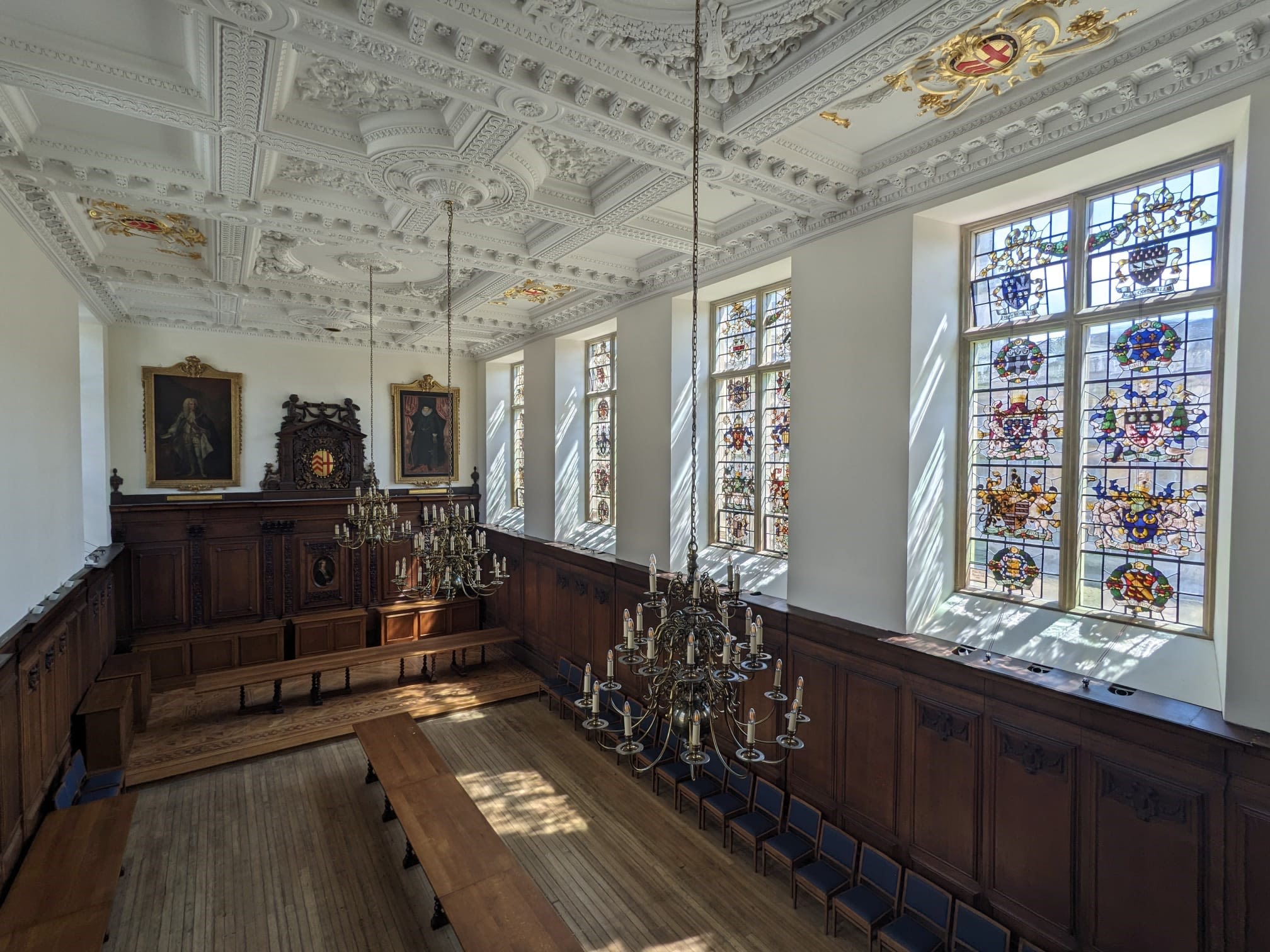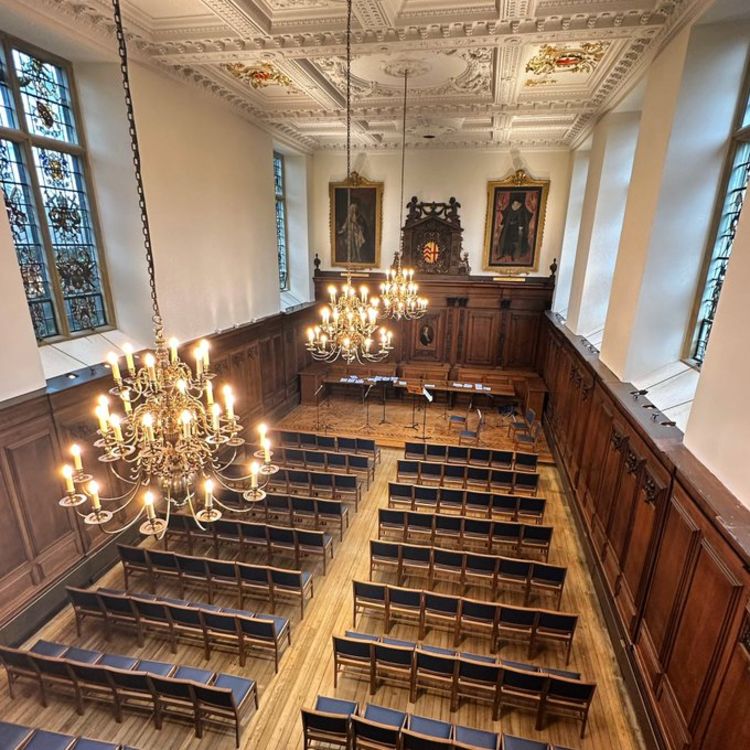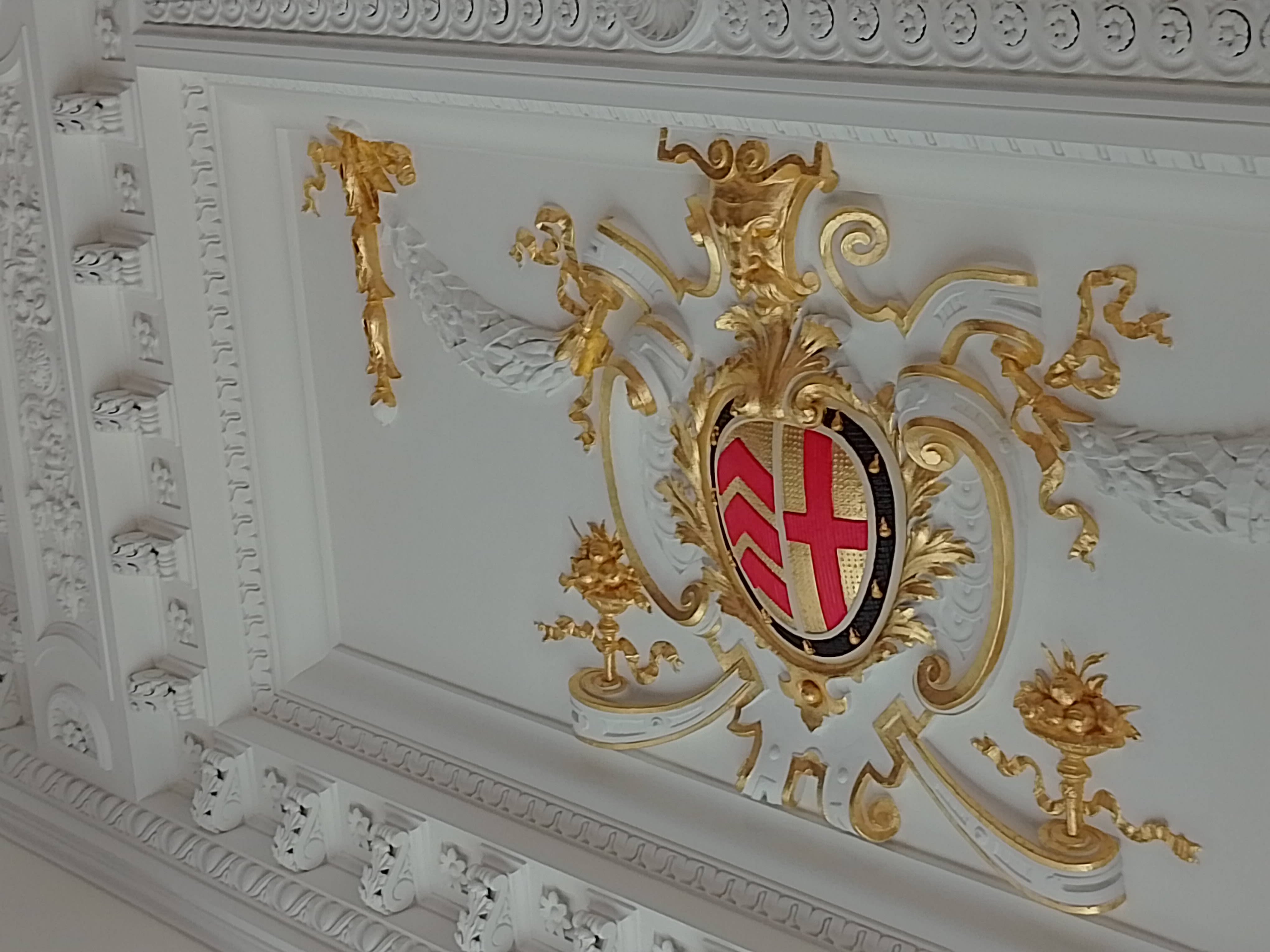The Hall reborn
Following completion of the second phase of Clare’s Old Court transformation project, the Hall has re-opened for College functions after a 4-year closure.

The painstaking restoration and conservation of one of the College’s most iconic spaces is immediately evident on entering the Hall. Every period of the room’s architectural history is now displayed to best effect: the 17th century panelling has been conserved, and the walls repaired and repainted; the 19th century plasterwork ceiling has been repaired, redecorated and re-gilded; and the early 20th century stained glass windows (commemorating donors to the College since its foundation) have been cleaned. Panelling, walls, ceiling and windows now shine with a brilliance not seen in generations.

The familiar long tables have been expertly reconditioned, and are now accompanied by new chairs to facilitate a more flexible use of the space – for concerts and performances as well as meals. The improvements to the Hall, bringing it back to its former glory while enhancing its use for College purposes, have been made possible by a generous benefactor, the latest in a long line of philanthropists starting with the alumni who funded the construction of the Hall in the late 17th century.

The end wall behind High Table retains its familiar layout, with full-size portraits of the first Duke of Newcastle (Fellow-Commoner and Clare’s only Prime Minister) and the first Earl of Exeter (Fellow-Commoner and Benefactor) flanking the 18th-century oval portrait of the foundress, Lady Clare. This architectural ensemble of gilded portraits and wood panelling is one of the most splendid and recognisable features of the Hall.

To complement these figures from Clare’s earlier history, the gallery above Hall (leading to the Senior Combination Room) will display two portraits from the College’s more recent history: Bryan Organ’s magnificent portrait of Eric Ashby (Master 1959–75) and, in due course, a portrait of Loretta Minghella (current Master, and the first woman to hold the role in 700 years).
Many of the portraits which used to hang on the walls of the Hall will require expert conservation before they can be re-hung – the centuries have taken their toll on frames and canvasses alike. This, however, has two advantages: it allows the expertly restored fabric of the Hall to be appreciated in all its magnificence, and also provides an excellent opportunity to think more broadly about how the College displays its wide-ranging collection of paintings.
Clare’s art works span every century from the 17th (a portrait of Hugh Latimer, protestant martyr) to the 21st (a portrait of Lord Grabiner painted shortly before his retirement from the Mastership in 2021). Alongside historic portraits of Masters, Fellows, Fellow-Commoners and alumni, the College also has a fine collection of 20th century paintings by noted artists such as John Piper and William Nicholson. Some of these pictures have either been hung too high to be properly appreciated or have languished in the College art store.
As the incoming Curator of College Pictures, it is my privilege to consider how the College’s artworks from every century can best be displayed across the College estate to enhance all our public spaces – from Old Court to Lerner Court. Working with colleagues, I hope we will find fresh and compelling ways to enhance appreciation of our diverse collection, both as works of art and as pointers to Clare’s long history.
Toby Wilkinson, Fellow, Curator of College Pictures
from 1 October 2023
